As July gives way to August, the morning chorus diminishes in the grasslands and woodlands of northeastern Illinois. The prairies take on an increasingly golden hue. This is the prairie pothole at nearby Nelson Lake preserve in Batavia:
 Common Yellowthroats are still tending to nests and singing, usually out of sight in the high vegetation:
Common Yellowthroats are still tending to nests and singing, usually out of sight in the high vegetation:


The songs of orioles and Rose-breasted Grosbeaks no longer ring through the treetops. Many bird species are busy with the affairs of raising families. Energy must be conserved and diverted into replacement of feathers during the post-breeding molt.
Indigo Buntings continue to sing from treetop perches:


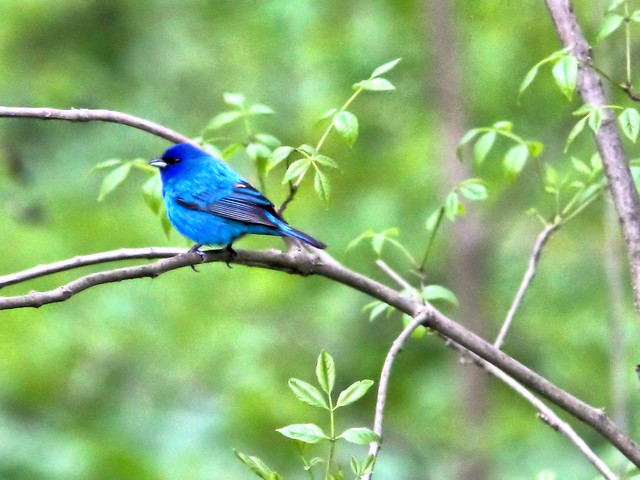

We visited Lippold Park, also in Batavia. This is the small marsh and pond, with the pavilion and fenced treetop walk in the background. (Mary Lou just received a phone call):

The prairie at Lippold is protected and well-managed. It was alive with wildflowers:


American Goldfinches are very late breeders and are only beginning to gather flower down for their nests. I waited patiently for one to alight among the flowers, but instead they moved among the low shrubs:




Two years ago in late August I did catch one singing among the flowers at this same location:
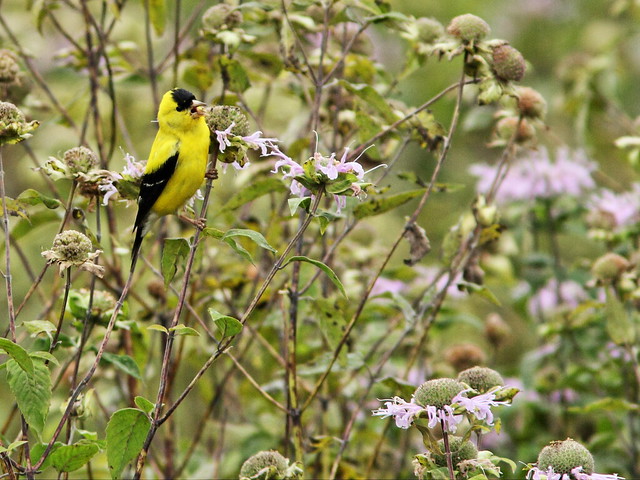
The plumage of an adult female American Goldfinch is more subdued:

Bells and whistles... go together like a goldfinch and thistles. Common as they are on the prairie, I never tire of seeing, hearing and photographing goldfinches around and above me.
August through September is their peak season, as the thistle begins to go to seed, providing them both food and shelter. Other birds have nearly finished their breeding and are hiding away to molt, but the goldfinches are eating the seeds and gathering the down of the thistles for their nests.
At Lippold park on August 25, 2011, a female goldfinch was harvesting down for her nest:
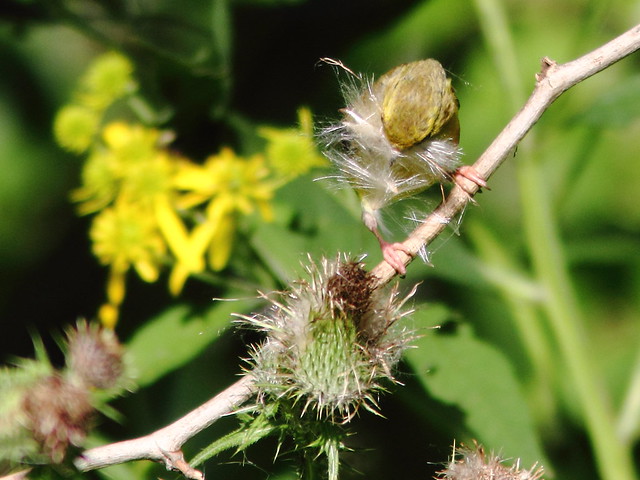 This male was collecting thistle down at Nelson Lake back in 2011:
This male was collecting thistle down at Nelson Lake back in 2011:
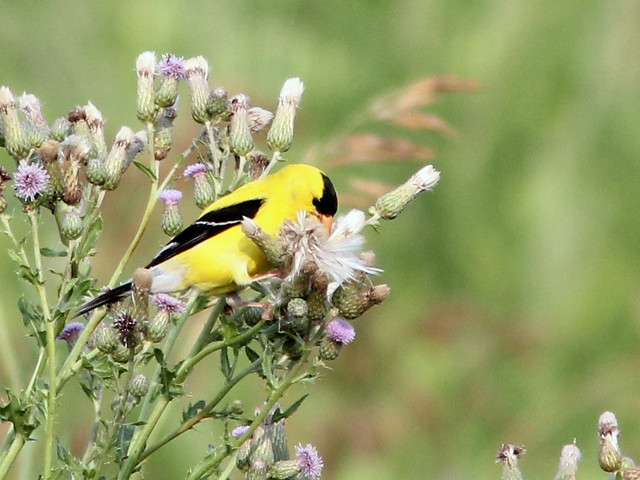
One of the few bird species to feed their young no insects, they engorge the thistle seeds and nourish their young with a protein-rich "milk" that is secreted from their stomach linings. A fledgling goldfinch appears bigger than its mother as it begs to be fed:

One of my favorite goldfinch captures is this one, reflected in the creek at Lippold Park:
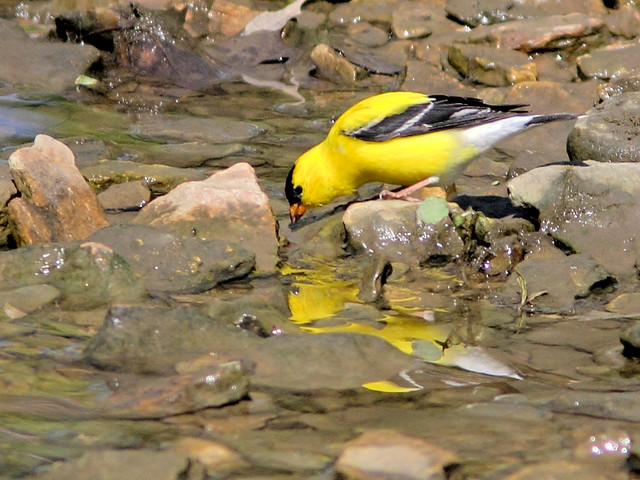 = = = = = = = = = = = = = = =
= = = = = = = = = = = = = = =
Linking to Misty's CAMERA CRITTERS,
Linking to Eileen's SATURDAY'S CRITTERS,
Linking to FENCES AROUND THE WORLD by Gosia
Linking to SKYWATCH FRIDAY by Yogi, Sylvia and Sandy
Linking to WEEKEND REFLECTIONS by James
Linking to BirdD'Pot by Anni
Linking to Wild Bird Wednesday by Stewart
Linking to Wordless Wednesday (on Tuesday) by NC Sue
Linking to ALL SEASONS by Jesh
________________________________________________
Please visit the links to all these memes to see some excellent photos on display
________________________________________________
We rarely see American Robins near our south Florida home, so they are a welcome sight when we return to Illinois:
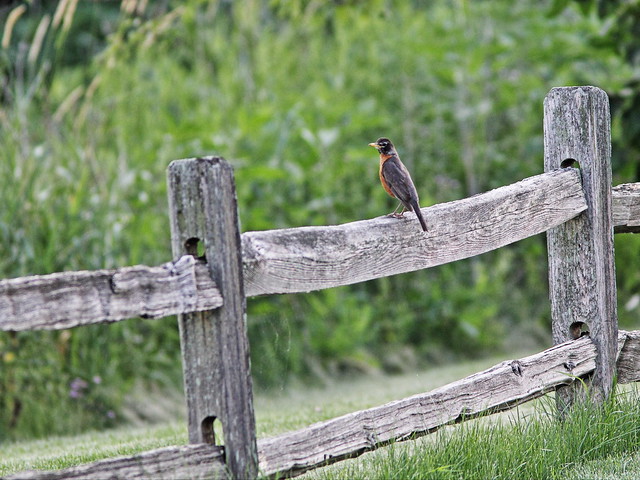
Spring migration is over. Most of the local breeding birds have finished nesting and as July approaches the woodlands fall silent. Now is the time to retreat from the cool shade and visit the prairie, where the calendar appears to have been turned back.
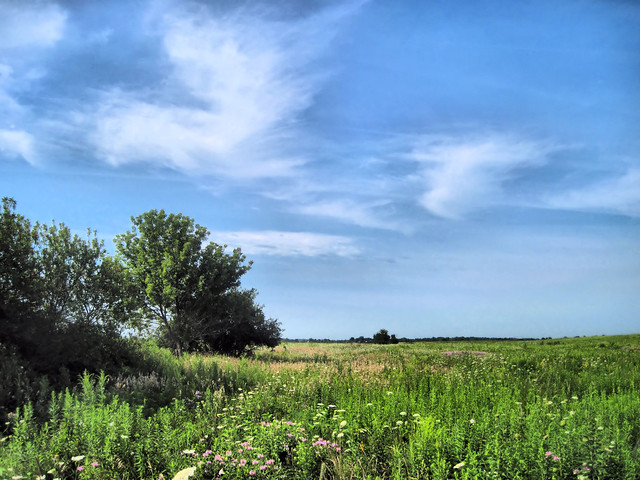
In a sense, the forest is the enemy of the Midwestern prairie. After the last of the glaciers retreated some 14,000 years ago, the bare land progressed from soggy tundra to evergreen woodland. As the climate warmed and dried, hardwoods such as hickory and oak invaded and eventually blanketed the land.
Drought and lightning combined to cause wildfires which produced huge swaths of grassland, and herds of bison helped to keep the prairie open. Prairie plants developed extensive underground roots which resisted destruction from fires and grazing until human settlement turned most of their habitat into rich cropland. Water-filled depressions (potholes) were left behind by the glaciers. These provided places for bison to wallow and waterfowl to find refuge. They often resisted cultivation.
Restored prairie pothole at Nelson Lake Marsh/Dick Young Prairie preserve, near our second home in Kane County, Illinois:
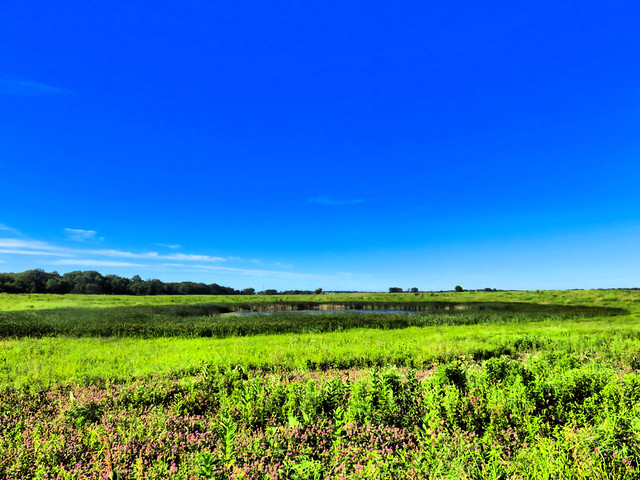
Now the remnants of the prairie require human intervention in order to prosper. The grasslands survive because of controlled burns and selective removal of invasive shrubs, trees and other vegetation, both native and exotic. At Nelson Lake preserve the grass is tall and seed heads are golden, inviting me to render my photo as an oil painting (click on photo for enlarged views):

Song Sparrows and Common Yellowthroats have started second and even third broods, and are singing vigorously.

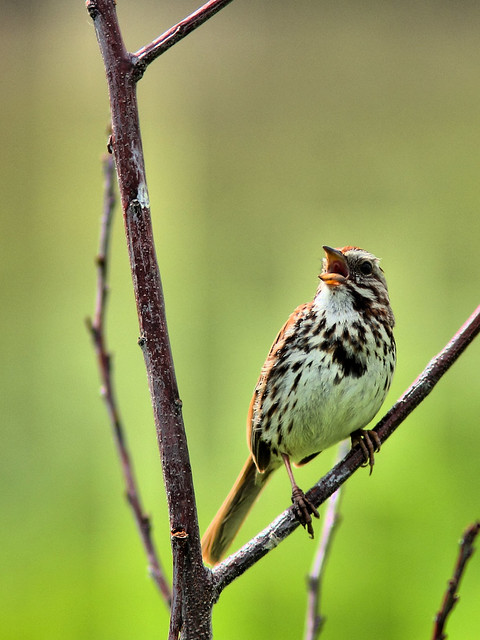
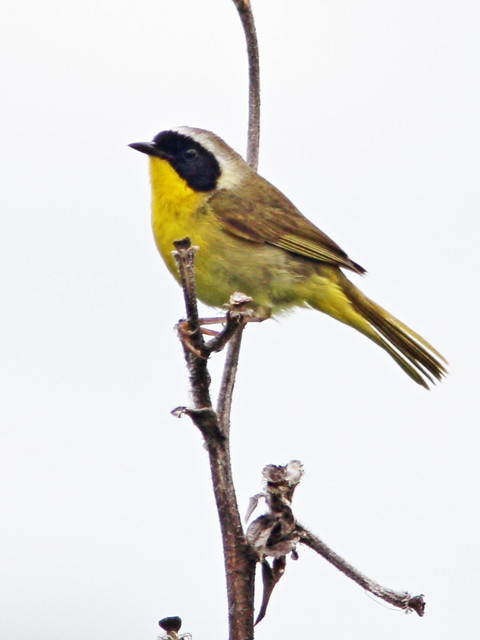
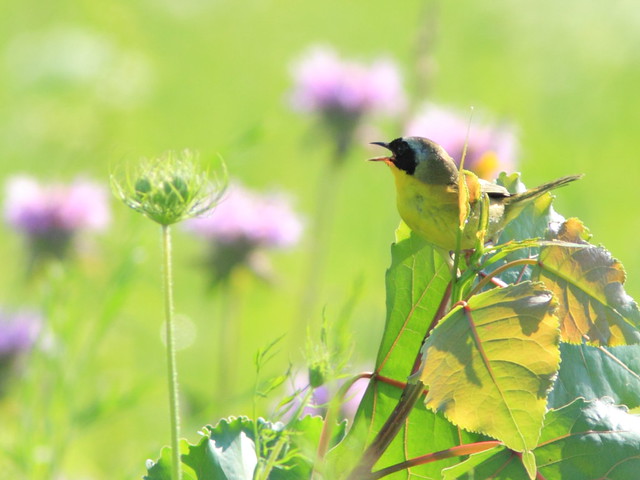
Old fence posts are the tallest roosting places in the grasslands, and a Savannah Sparrow keeps watch from one:
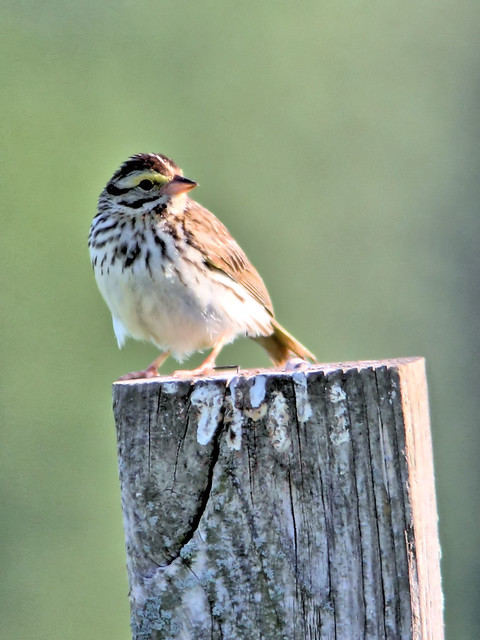
Tiny Henslow's Sparrows are hard to find in the tall grass. Note the greenish tint on its head:

Grasshopper Sparrows prefer areas with shorter grass:
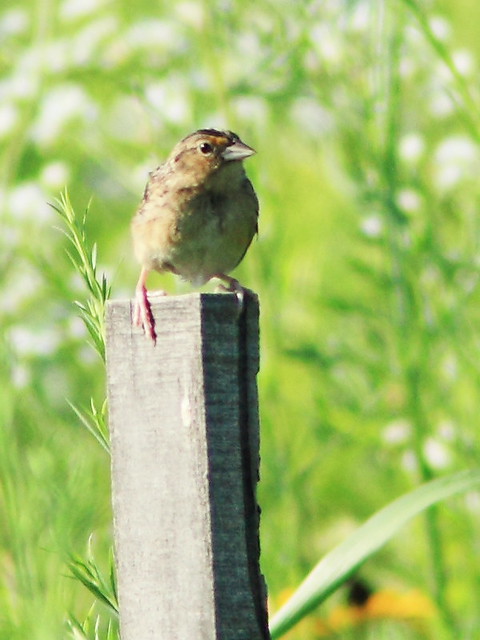
Sedge Wrens rattle their songs along the path:
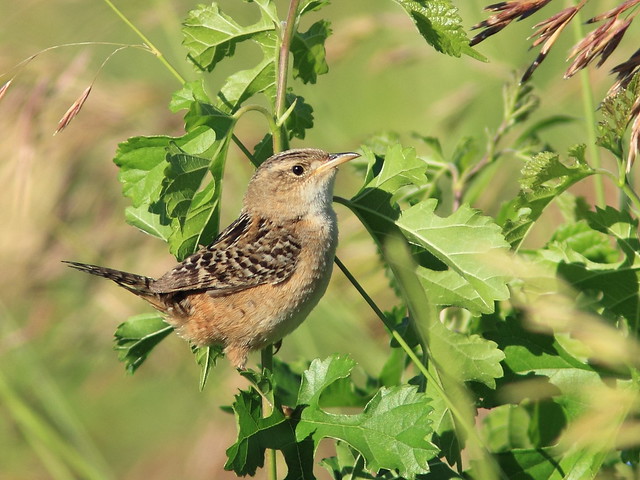
Bobolinks are still feeding their young. Their upside-down plumage pattern makes them favorite subjects as I try to obtain a perfect pose:
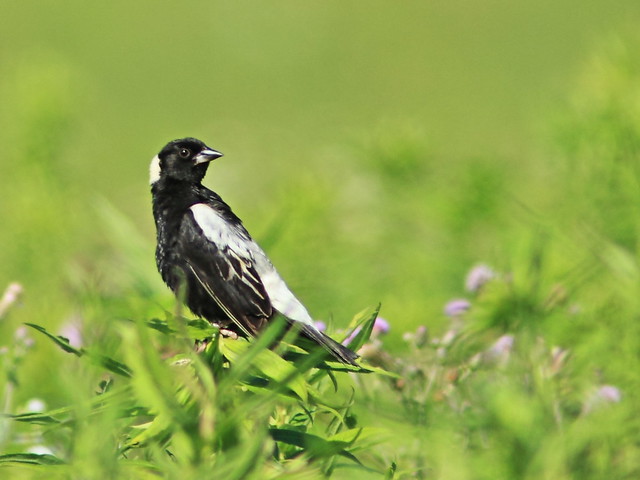

The demure female Bobolink is nonetheless beautiful:

Colorful Dickcissels do not arrive in any great numbers until mid- to late June.

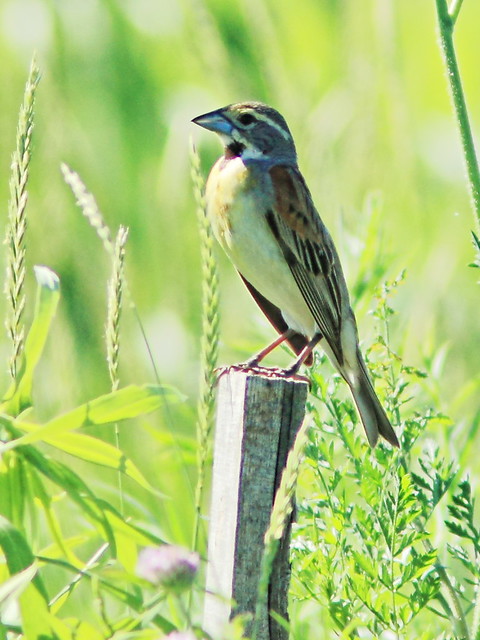
American Goldfinches wait for thistle and milkweed to produce the down for their nests and seeds for their vegetarian babies:
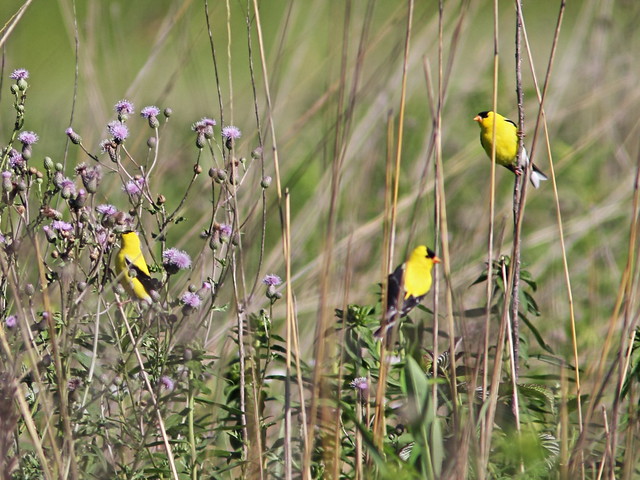
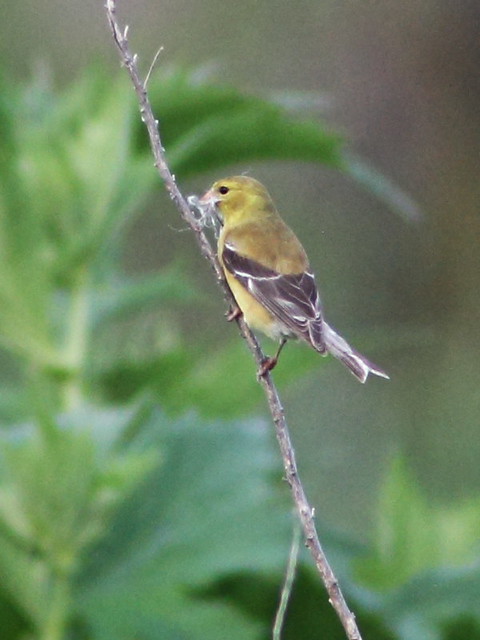
I catch the reflection of a goldfinch as it sips at a nearby creek:

Red-winged Blackbirds defend their territories with song...
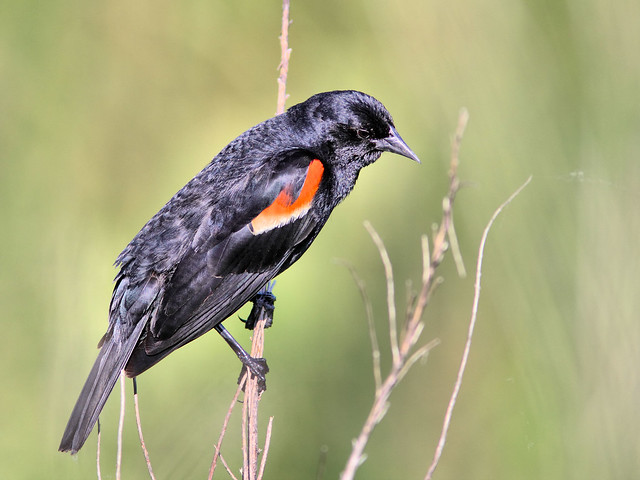
...and action, as one takes on a Red-tailed Hawk:

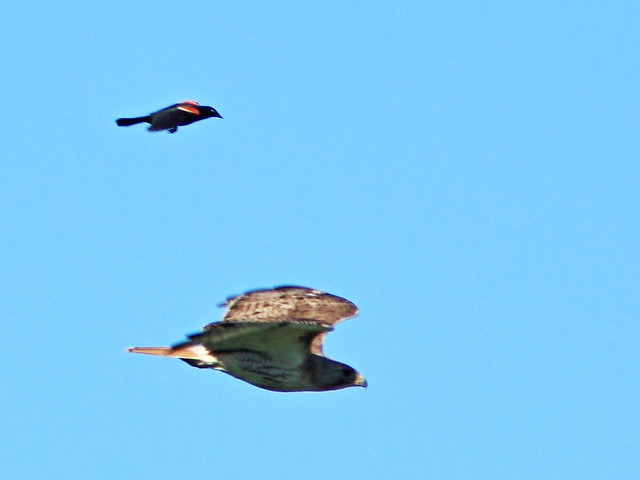
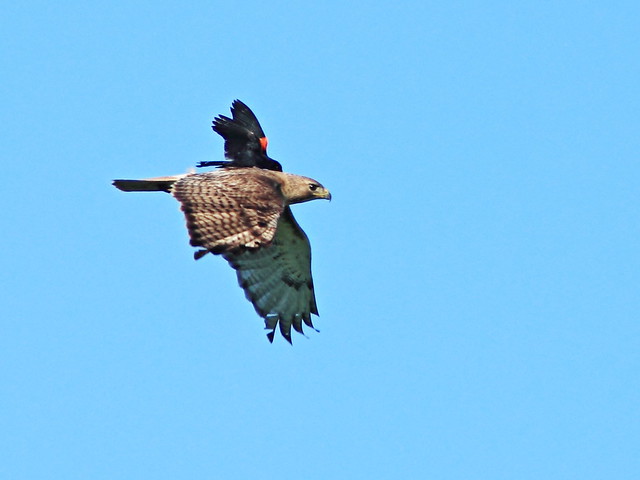
Spiderwort and Black-eyed Susan are common summer flowers in the prairie:
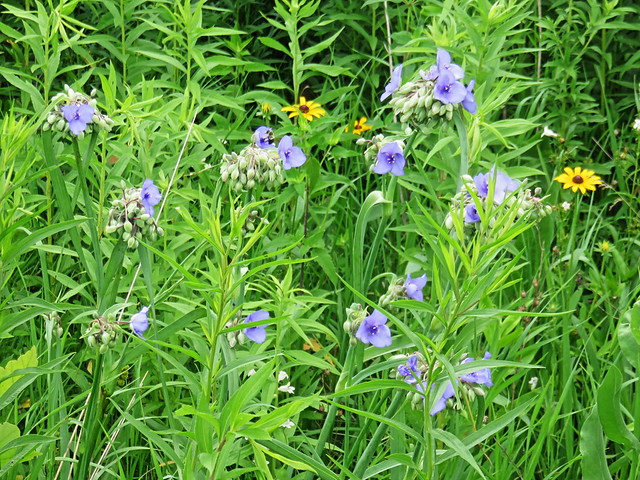
= = = = = = = = = = = = = = =
Linking to Misty's CAMERA CRITTERS,
Linking to Eileen's SATURDAY'S CRITTERS,
Linking to GOOD FENCES by Tex (Theresa).
Linking to SKYWATCH FRIDAY by Yogi, Sylvia and Sandy
Linking to WEEKEND REFLECTIONS by James
Linking to BirdD'Pot by Anni
Linking to Wild Bird Wednesday by Stewart
Linking to Today's Flowers Friday by Denise
Linking to Wordless Wednesday (on Tuesday) by NC Sue
________________________________________________
Please visit the links to all these memes to see some excellent photos on display
________________________________________________
It's easy to dismiss sparrows as nondescript little streaky brown birds that lurk in the bushes. Actually, the fourth bird I recorded on December 5, 1948, the day I started keeping a life list, was an "English Sparrow." Now called the House Sparrow, it is not a member of the American sparrow family, but rather is classified as an Old World weaver finch or "true sparrow."
Until I matched it with a picture in my first bird book I called it a "Chippie," because that was what my grandmother called them. Here is the page from a copy of that book, Chester A Reed's 1923 "Bird Guide - Land Birds East of the Rockies." Notice the properly dressed lady approaching on the sidewalk, and also the note of disgust in Reed's description.

We see very few House Sparrows in our NE Illinois yard, although they are common around nearby shopping centers. Until new homes replaced the open fields around our condo, our most common sparrow was the Savannah Sparrow, illustrated two pages later in Reed's guide.

The actual sparrow does not resemble the rotund, broad-tailed and weary-looking one in Reed's painting. My first ever photo of a Savannah Sparrow captured its mischevious nature as it peeked out at me from a clump of grass. I took this photo in Florida, the first of my few sightings of this species there in the local wetlands

This bird occupies one of the utility markers upon which I focused my camera while parked near our Illinois condo. The photo shows off the bright yellow highlight over the Savannah Sparrow's eye.

They often posed atop the rock piles they shared with other prairie bird species. I had the advantage of positioning the car in a spot where the early morning sun would provide perfect light. The only variable was what kind of bird would be the first to alight.
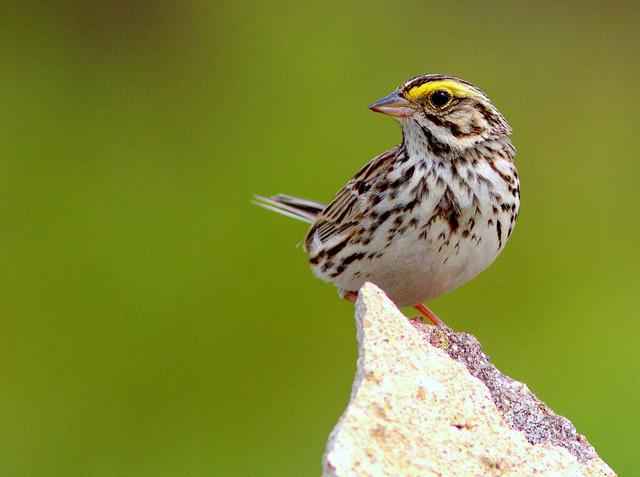
Savannah Sparrows are usually found on or near the ground...

...but they will sing from the highest point available when claiming or protecting their nesting territory.

When agitated, the sparrow may raise its crown.

All Savannah Sparrrows have crisp breast streaks that often coasesce into a central spot resembling that of a Song Sparrow, but they are smaller than the latter species and their thin and proportionally shorter tails are usually notched rather than rounded. This individual was quite pale.
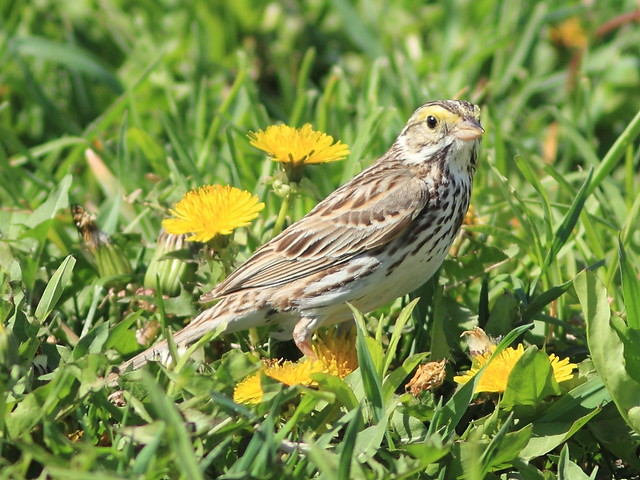
In another bird the breast streaking was rather sparse. Note the distinctive black malar streak, or "moustache."

One local bird had very narrow streaking.

This specimen, photographed at Forsythe National Refuge (Brigantine Unit) in New Jersey, was remarkably dark.

 Common Yellowthroats are still tending to nests and singing, usually out of sight in the high vegetation:
Common Yellowthroats are still tending to nests and singing, usually out of sight in the high vegetation:






















































